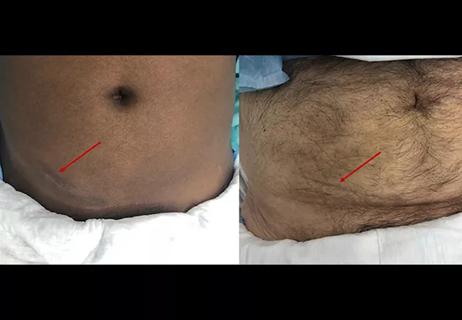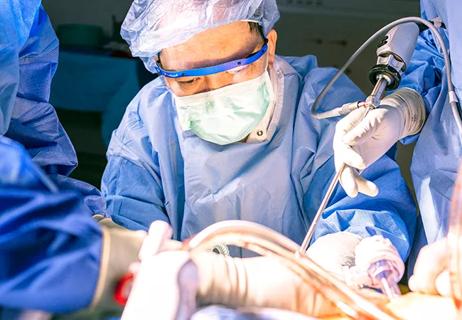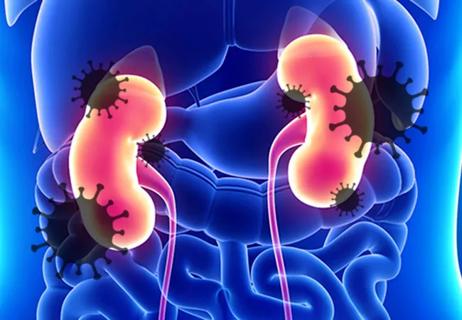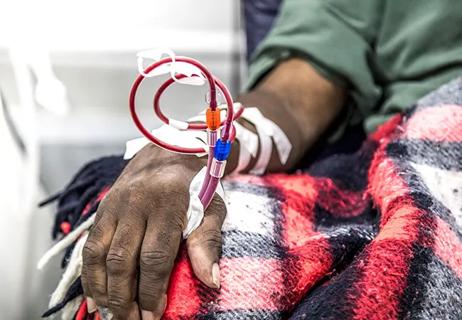Research hopes to remedy growing need

Traumatic limb loss is expected to increase by 72 percent over the next 40 years, and two-thirds of amputations occur in adolescents and young adults, according to Cleveland Clinic plastic surgeon Bahar Bassiri Gharb, MD, PhD.
Cleveland Clinic is a non-profit academic medical center. Advertising on our site helps support our mission. We do not endorse non-Cleveland Clinic products or services. Policy
While replantation/transplantation surgery has progressed dramatically over the past few decades, reattachment of limbs may not be possible due to inadequate storage procedures that don’t protect viability, adding insult to injury and significantly impairing a person’s productivity.
“Limbs can typically be stored on ice for about 12 hours before they suffer muscle damage,” says Dr. Bassiri Gharb, who serves as the Plastic Surgery Department’s Head of Research. “But if you have a patient waiting in California for a donor arm from Ohio, or a patient must be transported for replantation surgery after an amputation, the limb may not make it there in time and the patient may lose it.”
Likewise, because life is more important than limb when a patient has suffered multiple injuries, replantation is often delayed to perform life-saving procedures, which also significantly limits the chances of successful replantation.
To remedy this situation, Dr. Bassiri Gharb and her team investigated use of extracorporeal circulation as a means of normothermic ex situ perfusion to extend limb viability and function. A total of 18 porcine limbs were perfused using specialized equipment and compared to 18 control limbs. In the intervention group, 13 limbs were used to develop the perfusion protocol and five were managed according to that protocol, which dictated the limbs were to be perfused at 39oC for 12 hours using an oxygenated colloid solution containing red blood cells.
The results of the study, presented at the American Society for Reconstructive Microsurgery, showed that the protocol was able to preserve limb function and physiology for at least 12 hours. Next, they extended the perfusion time to beyond 24 hours and successfully perfused five more limbs.
“The extracorporeal circulation technique, which is also being used for liver, heart, lung and kidney transplants, replicates the natural environment of the tissues, and maintains physiologic cellular metabolism to avoid the damaging effects of hypoxia and cooling,” Dr. Bassiri Gharb explains.
Given the success of the porcine study, the team has since moved on to studying donor human limbs with funding by a grant from the Plastic Surgery Foundation.
“We have perfused two human limbs so far, and have successfully preserved them for 28 hours and 48 hours, respectively,” she notes, keeping them at a physiologically viable temperature similar to what it would be if the limb were still connected to the body. “The results were very encouraging and significant for improving patient outcomes. The limbs remained pink and warm, and the condition of the limbs actually improved during perfusion. We could see the fingers and wrists moving,” she says, “which bodes well for successful replantation or transplantation.”
Next steps in the research challenge for the team include developing portable equipment and testing pharmacologic treatments that can assist in the perfusion procedure.

Smaller incision may lead to reduced postoperative pain for some patients

Improving access to lifesaving kidney transplant

The process could improve access and equity for patients with end-stage kidney disease

Video offers glimpse into technically challenging portion of the procedure

Infectious disease and kidney transplant specialists share key insights

Demographic and social factors found to influence preemptive listing

New interventions and policies haven’t increased wait-listing

Cleveland Clinic surgeons use single-incision robotic surgery to perform kidney transplant